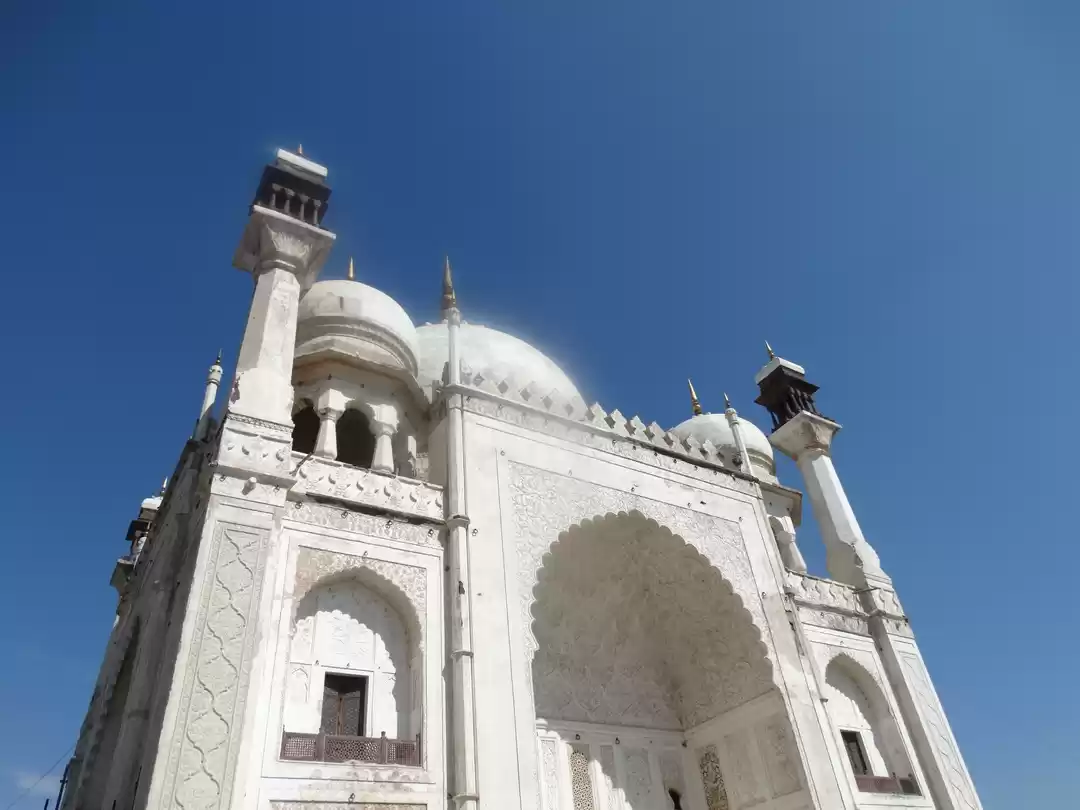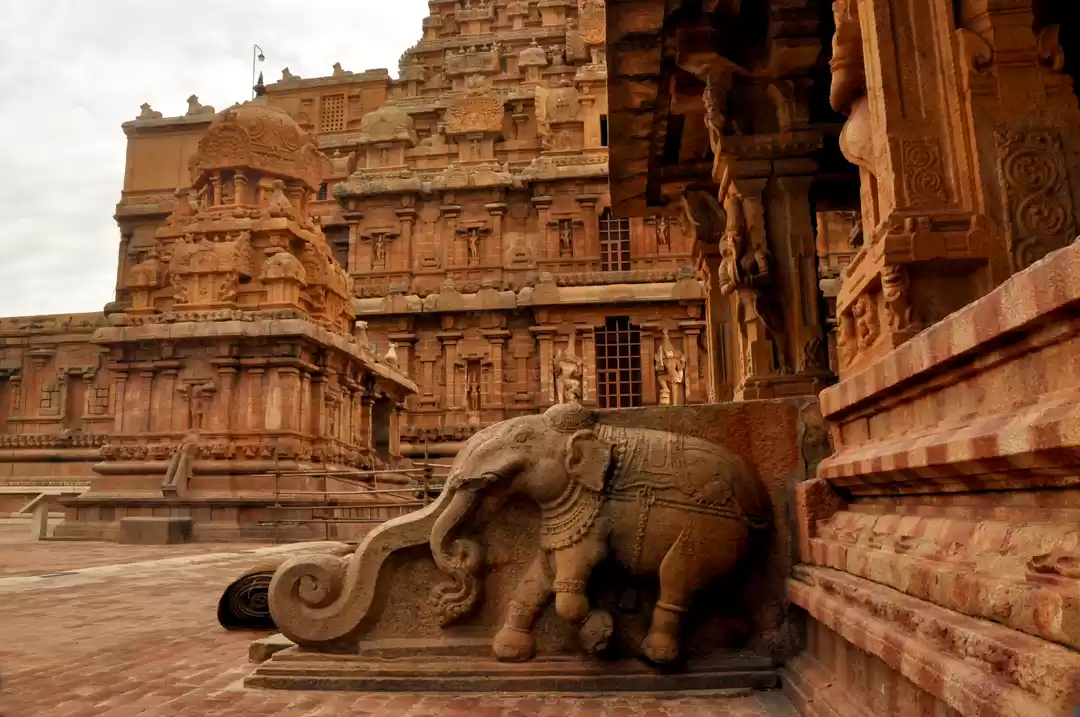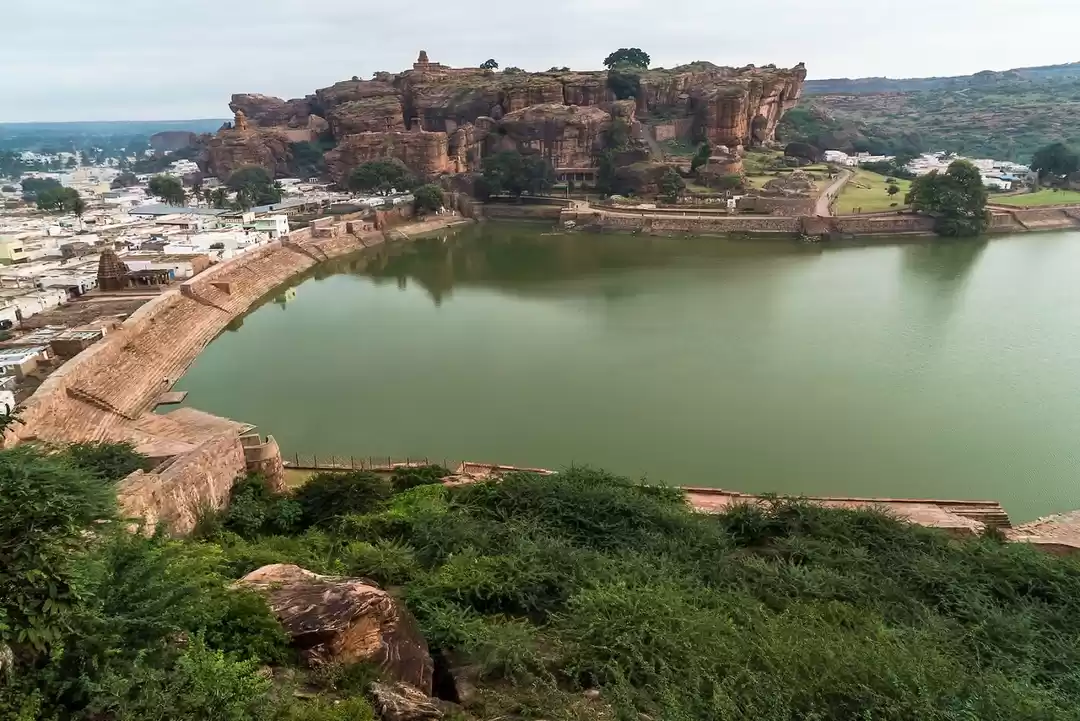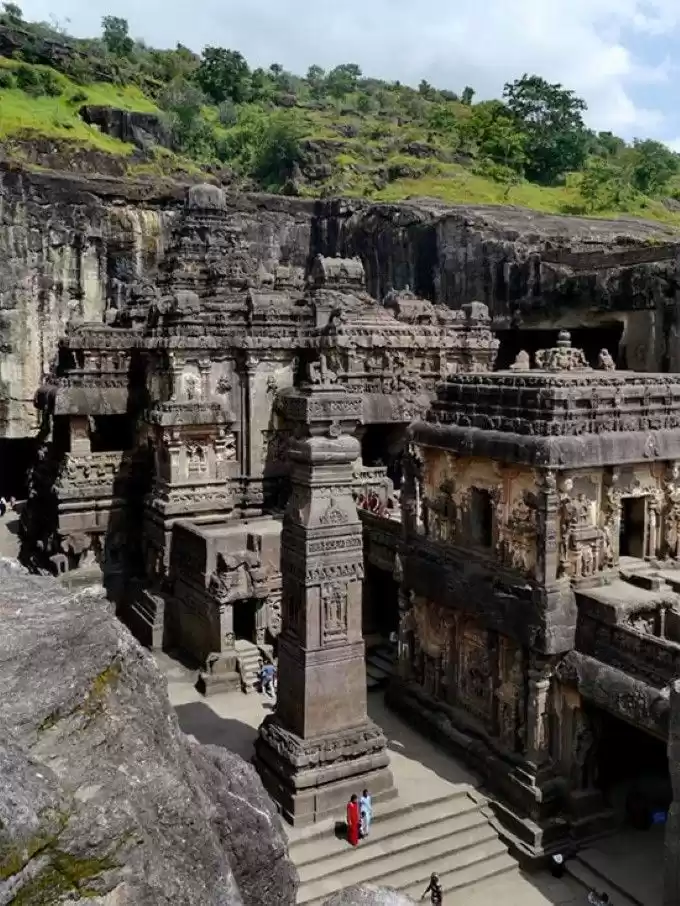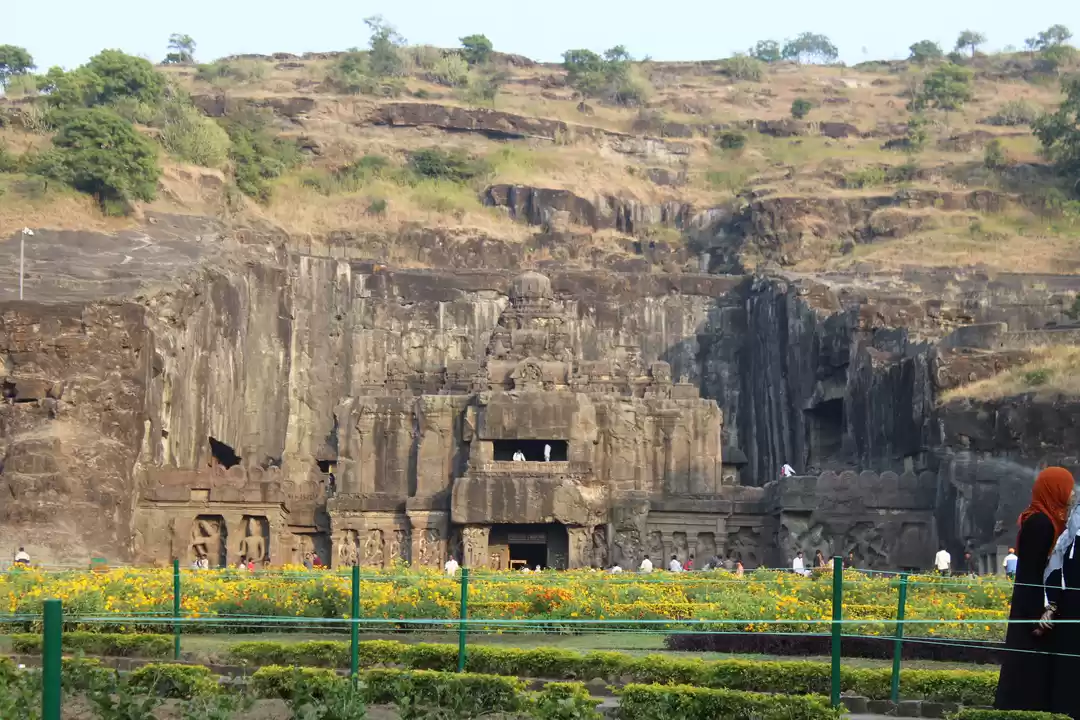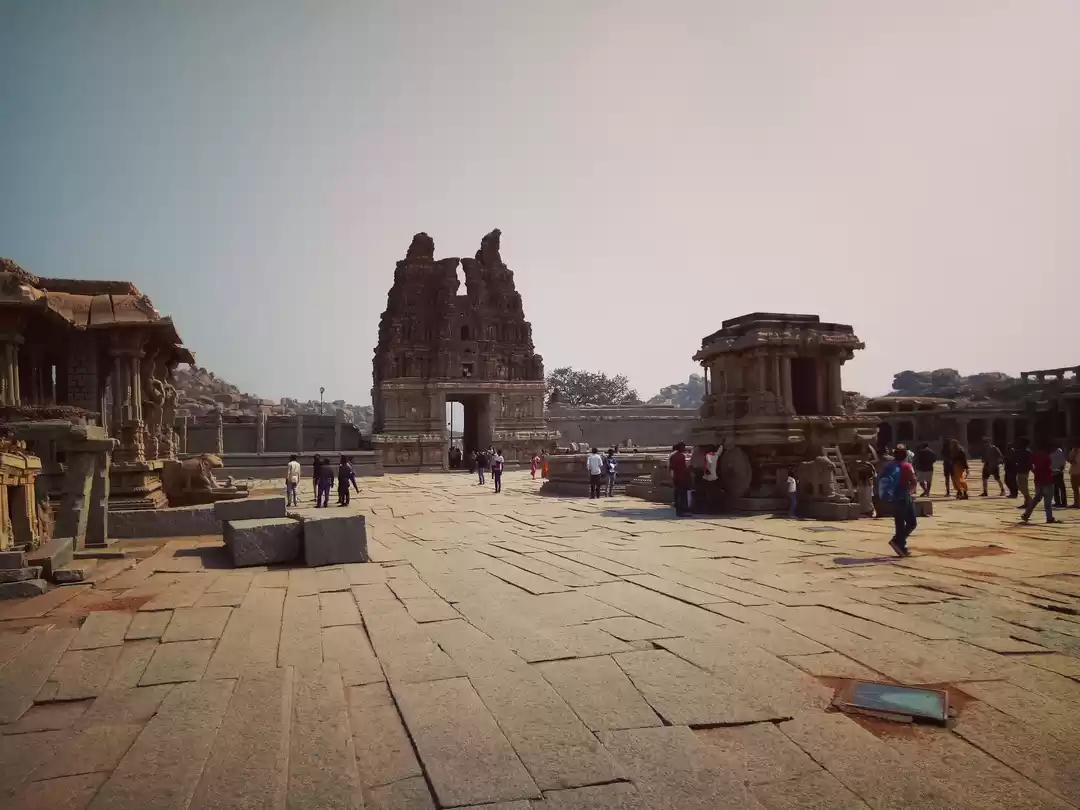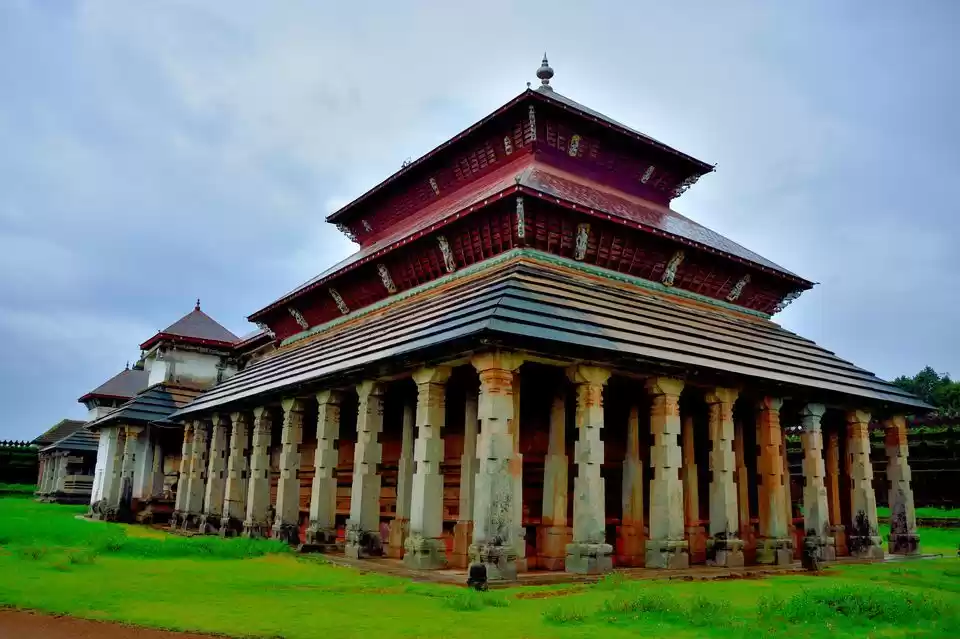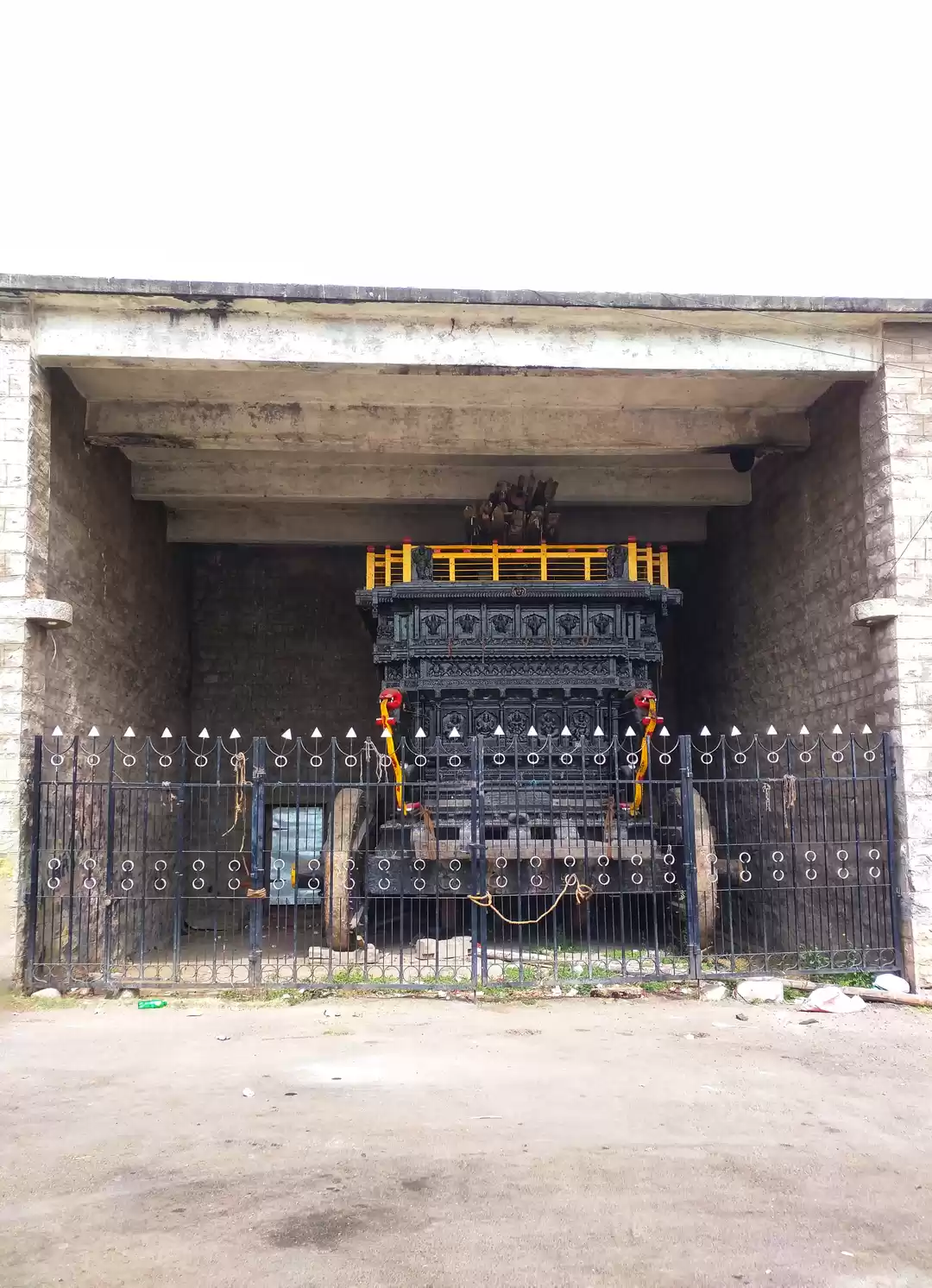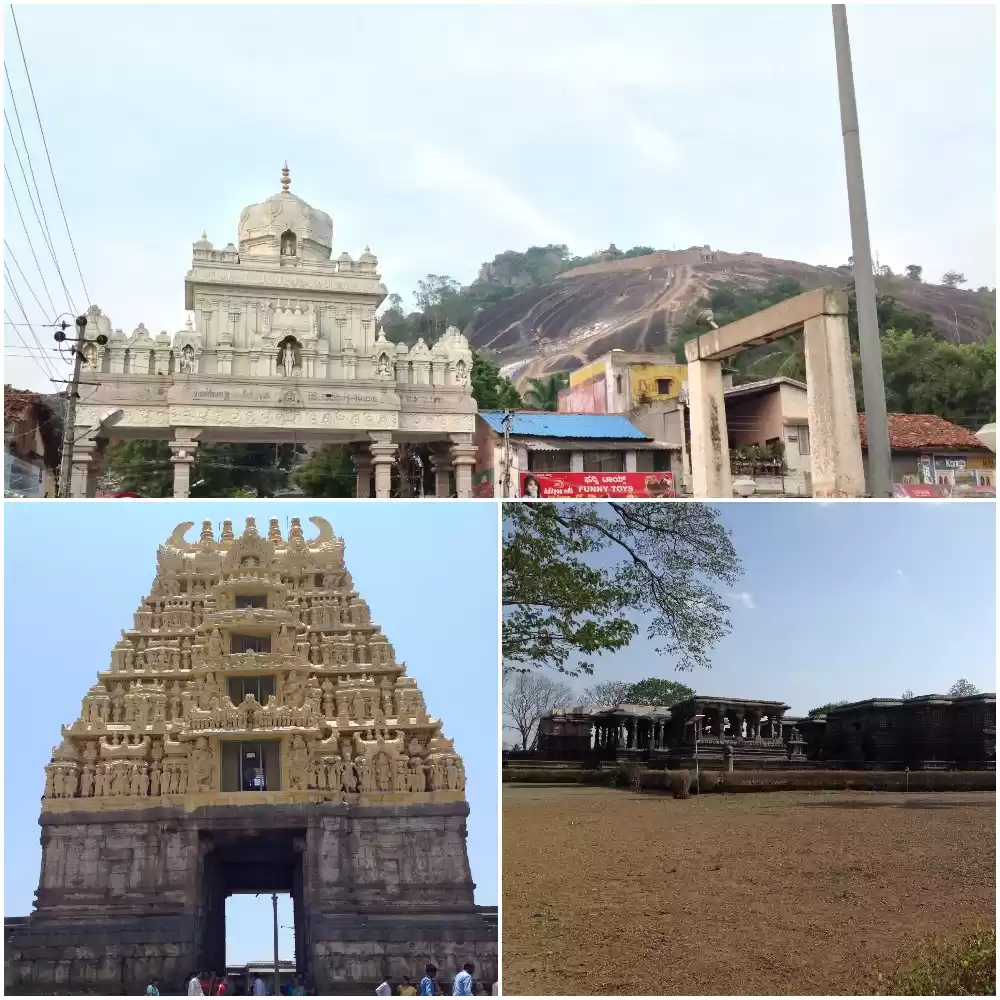
A maze of architectural wonders, a land where every stone narrates a story and every carving transports you back in time to the abundant diverse and prosperous civilizations and people that inhabited this great land, Bharat.
India is an ancient land and has seen numerous dynasties, civilizations and cultures from the days of yore who have blessed and gifted this land with architectural marvels like no other. Moreover, such is the precision, intricacy and exquisiteness of the craft that it leaves us awe-struck and wondering at the knowledge and skill of the people back in the day. These ancient architectural wonders also carry deep within them ancient advanced scientific knowledge regarding position of magnetic meridians, position of the sun during equinoxes, ancient engineering principles behind construction of temples and pillars and most importantly, several unraveled mysteries and technological designs that make a mockery of today's scientific and technological developments.
So here is listing some of these wonders, so that the next time you happen to visit one of them, you can gaze at these spectacles with a scientific viewpoint.
Musical pillars
The Vittala Temple or Vitthala Temple in Hampi is an ancient monument and part of UNESCO'S world heritage site. It is famous for for its exceptional architecture and skilled craftsmanship. It is the largest and the most famous structure in Hampi, built in the 15th century by the Vijaynagar empire. It is widely-known for it houses the stone chariot. The temple is dedicated to Lord Vitthala, an incarnation of Lord Vishnu.
The iconic temple has amazing stone structures such as the incomparable stone chariot and the fascinating musical pillars. It personifies the creativity and impeccable skills of the engineers and craftsmen of the bygone era.
Hoysaleswara temple or the Halebidu temple is a 12th-century Hindu temple dedicated to Shiva located in Halebidu, Karnataka. The temple was built on the banks of a large man-made lake and was sponsored by King Vishnuvardhana of the Hoysala Empire.
The pillars of this temple present a unique spectacle of ancient Indian engineering precision, skill and advancement.
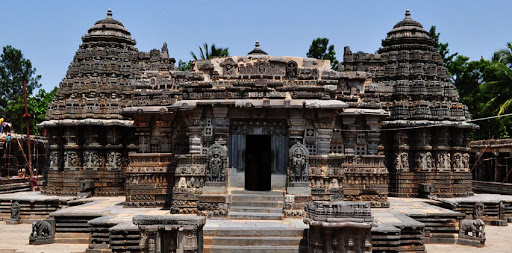
Le Pakshi" or Lepakshi, a tribute to "Jatayu", the giant holy bird holy giant bird that tried to rescue Sita from Ravana's Vimana and who fell after Ravan cut his wings. As narrated in the Lord Ram and Lakshman met a dying Jatayu who informed him of Sita's kidnap and was given a suitable cremation as he died in Ram's lap.
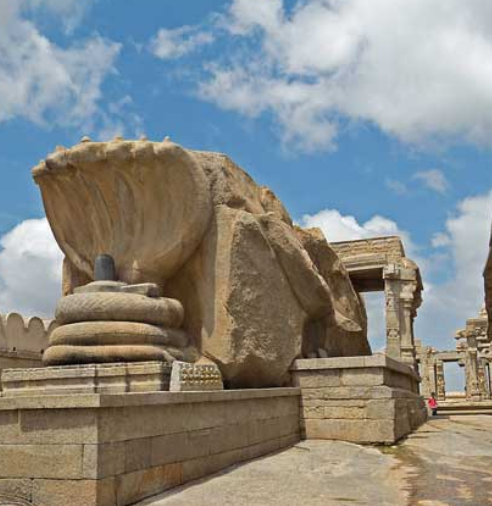
Most of the times, we dismiss Indian architecture as the craftsmen skills or tales of times before, yet the amount of scientific knowledge that they hide is extraordinary.
How did ancient people keep track of time, days, years???? Well, possibly we have all heard of sun-dials and moon-dials. Dials, so precise that they gave time to the accuracy of the very minute. One such dial is at the Konark temple in Orissa, where 24 intricately carved wheels tell a story. From afar, they probably resemble another spectacle of India's architecture prowess, yet up close, they have spokes and beads that have been mathematically and meticulously placed to reveal the time of the day and even the carvings even depict stories of season of the year along with the time of the day.
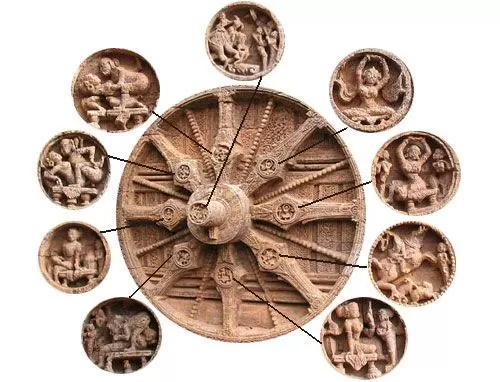
The subterranean presence of this flourishing and prosperous capital of the Dakshin Kosala kingdom, Sirpur,was discovered in 1872.
It is believed to have been in oblivion for a couple of centuries as an earthquake had leveled most of the surrounding in the 11th century. The three prominent archaeological sites are Laxman Temple, Buddha Vihar and Surang Tila. Out of these the Surang Tila, which dates back to the 7th centurt A.D., is the most prominent one and has been always fascinated researchers and tourists, alike. The temple complex is made up of white stone with a pillared terrace 30 feet above the ground with steps to reach the elevated terrace area. Towards the sides of the stairs with a curvature, which has cleverly been shaped in that design to prevent damage to the complex from earthquakes. The structure itself remained largely intact. Archaeologists suggest that this is due to the Advanced Construction techniques known as AyurVedic or Vedic architecture utilized by its builders.
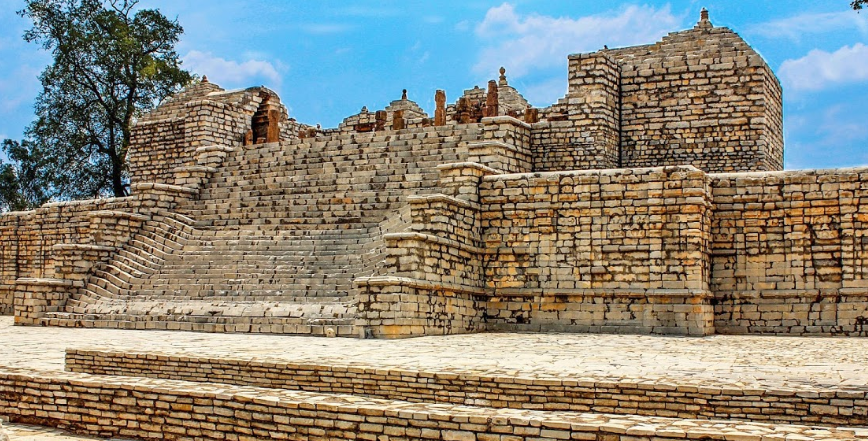
Shiva temples on a straight line
1. Kedarnath – Kedarnath Temple (30.74° N, 79.07 E)
2. Kaleshwaram – Kaleshwara Mukteeshwara swamy Temple (18.8 N, 79.91 E)
3. Srikalahati – Srikalahasti Temple (13.75 N, 79.7 E)
4. Kanchipuram – Ekambareswarar Temple (12.85 N, 79.7 E)
5. Thiruvanaikaval – Jambukeswara Temple (10.9N, 78.71 E)
6. Tiruvannamalai – Annamalaiyar Temple (12.23 N, 79.1 E)
7. Chidambaram – Nataraja Temple (11.4 N, 79.7 E)
8. Rameswaram – Ramanathaswamy Temple(9.3 N, 79.32E)
Note the longitude, 79° E 41’54”. These temple from Kedarnath to Rameswaram seperated by thousands of km, all on the same line??? Built 1000 of years ago with no satellite technology?? How???
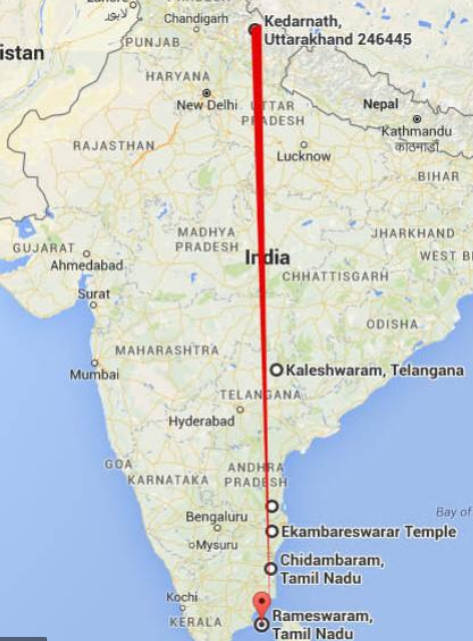
Ellora caves is one of the most famous and largest rock-cut monastery-temple cave complexes in the world, which features statues and paintings belonging to Hinduism, Buddhism and Jainism. Ellora is also world famous for the largest single monolithic excavation in the world, the great Kailasa Temple, situated in Cave 16 which stands out among the 33 rock-cut religious cave-temples in the Ellora cave complex. To top it all, this monument was constructed by excavating a mountain from the from top to bottom.
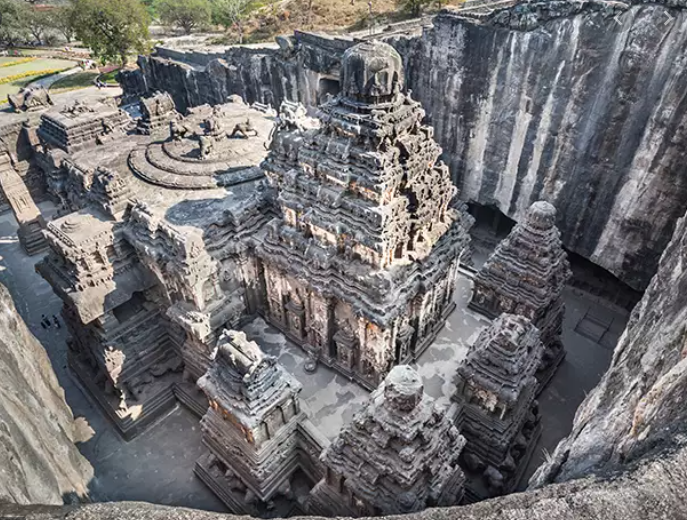
Up near the pillars, you can see these minute circular marks all around, which are so fine that they are definitely not made manually using chisels or hammers or any carving tools. In fact, there is enough evidence to suggest the use of lathes and a process called turning.
Today lathes offer us the benefit of embedding fascinating grooves and designs , but machining a 12 foot tall stone pillar is still no easy task.
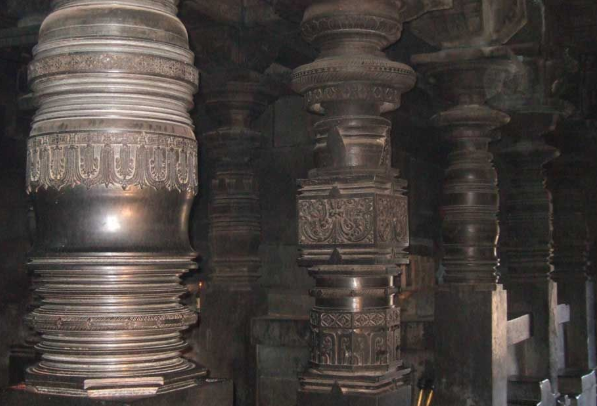
Well, that does not raise a lot of questions about lost technologies and knowledge, possibly to the innumerable foreign invasions and destruction this nation suffered in medieval and modern times.
Situated in Andhra Pradesh, Lepakshi is today a famous tourist site for the galore of temples it is decorated with. This place is decorated with numerous statues, temples and pillars that leaves one in amazement on the level of engineering that has been used in the construction. At the front of the temple is a large Nandi (bull), the mount of Shiva. It is carved from a single block of stone, and is said to be one of the largest of its type in the world which is another evidence of the technology and skill in the medieval and ancient age. The Nandi statue is aligned in such a manner as if it is designed to look straight at the Lingam in the courtyard which lies under the hoods of a giant serpent.
A part of the art and culture loving Vijaynagar empire, it houses the Veerbhadra temple and believe it or not, this temple has a hanging pillar, whose mystery confounds all those that visit it.
With 70 stone pillars, there is one that hangs from the ceiling. The base of the pillar is slightly above the the ground and it is possible to pass objects such as a thin sheet of paper or cloth from one side to the other. Research reveals that the pillar acts as a ballast to the hall’s roof. Hence, any minor attempt at shifting it could ruin this balance and cause irreparable damage to the structure as was the case when a Britisher tried to do so.
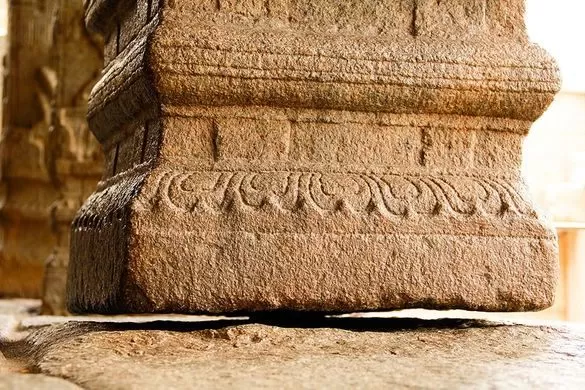
The pillars at the Vitthala temple leave one gaped at the melodious sounds they produce when one taps on them. These pillars are known to create sounds of ancient and modern bells. A massive pillar which has been hollowed out into seven thinner pillars joining the large one and produces the 7 notes of Indian or Western Classical music on tapping.
This is a kind of sound technology that existed in ancient India that helped granite pillars mimic sounds produced by different instruments including complicated instruments such as "Gatam" (sound made by tapping on terracotta pots), "jaltarang" (uses water waves) and string instruments.
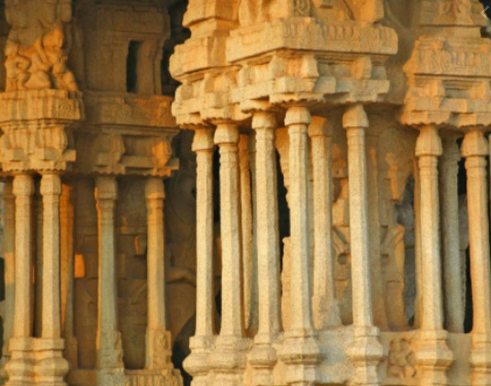
Not only are these pillars of the same size and mass, but they also do not have holes within them to modify the internal density. This leaves us with the explanation that ancient India was well advanced in metallurgy and understanding the chemical bond and property of different elements. It also points us to ancient advanced stone melting technology and in-depth understanding of sound and acoustics that allowed people to melt large blocks of stone and mix it with metals (something like alloys) to modify the intrinsic density of the pillars. More evidence of stone melting technology has been discovered at Kancheepuram where chains have been discovered formed by fusing different stones. The patterns found on the roof of this temple resembles "cymatics patterns" which are generated by different sounds.
Well , well, well .......
The five Shiva temples represent the manifestation of Linga in 5 elements of nature named as the Pancha Bhoota Stala (Five Elements Place) – Earth, Water, Fire, Air and Space. The temple for water is in Thiruvanaikaval (water spring in the innermost sanctum), fire is in Thiruvannamalai (giant lamp is lighted atop the Annamalai hill during Kartikai Deepam festival shows the manifestation as fire) , air is in Kalahasti (flickering lamp) , Earth is in Kanchipuram (the swayambhu lingam of sand at Kanchipuram representing the deity's association with Mother Earth) and the temple for space/sky is in Chidambaram (formless space).

Though the exact significance of this longitude and the geographical location of these temples is not fully known, it is mainly attributed to yogic power (Lord Shiva is closely related to that) and science.
This terrace has ruins of carved pillars and was mostly likely used for religious functions. On the three sides of the terrace were sanctums of Lord Shiva and Lord Vishnu. The blocks used for construction are held together by the iron Vedic paste with plenty of evidence regarding it. There is no gap between the rocks. This glue-like-substance is said to form a bond that is at least 20 times stronger than concrete. There is a detailed description for making this paste in an ancient Indian text known as the Maya Mountain a manuscript dedicated to construction techniques. The information contained within the document is understood to have been passed down to humans from Maya Sura, an ancient king who was said to be a part of the various construction projects on Earth and cities in the sky.
There is plenty of evidence pressing the belief that ancient advanced technology was used in the construction. A marvelous earthquake-proof feature has been discovered at the site where several 80 foot long shafts have been placed at key points within the temple. They act as air pockets and can dissipate the impact of seismic events.
A lot to learn and analyse for modern day builders.
The magnificence of the Konark temple not only lies in its exquisite architecture but also in the story that each carving tries to tell. Designed to be a chariot, if you notice the wheels, you would find 8 spokes in each of the fields, which identify with 3 hours of time difference. In between two large spokes lie smaller spokes, exactly at the center and identify as 1:30 hr or a 90 minute time difference. Between this larger and smaller spoke are 30 beads, each precisely placed such that each bed represents 3 minutes of time. The clock is designed to work in an anti-clockwise fashion. In the center or the axle lies the carving of an animal. Simply point at the tail and wherever the shadow falls, you can compute the time.
The top most spoke represents midnight and then you move in an anti-clockwise fashion till you reach the bed that is covered by the shadow of your hand. Each bead is wide enough to represent the three minutes. Depending on whether your shadow falls in the center or on the edge, time can be calculated precisely. The sun dial located on the east side of the temple works from sunrise to afternoon and on the west side from afternoon to sunset.
Regarding night time, it is believed that these wheels can also function as moon dial based on the phase and position of the moon in the night-sky. However, the exact mechanism isn't fully understood. Nor is their greater insight into the numerous circles of beads or the purpose of the other 22 wheels. Time and again we have seen that Indian architecture either tries to tell a story, to teach us something or to serve some purpose, these beads, wheels and carvings definitely have some hidden significant purpose.
It is also believed that before it was partially destroyed and parts of its collapsed , there was a 52 tonne magnet situated at the top that helped in idol levitation.
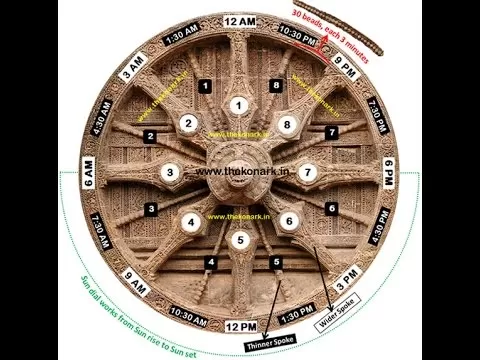
Last, but not the least, the most fascinating of all.....
The immense precision and excavating about 200,000 tonnes of rock that this temple required for construction would take centuries, if done manually. The temple complex contains carved statues of elephants with a gorgeous Shikhara on the top. The 100-foot tall pillar and the elephants carved at the bottom of the temple, look like as if they are carrying Mount Kailash on their backs.
The construction of such a massive site indicates the use of ancient advanced drilling machine that could possibly drill through rock and create an indestructible structure. The presence of openings to unknown passages within the caves, points to another mystery. These passages lead to the underground. However, they are too small for humans to navigate. Moreover, to support a supposed underground civilization, there are shafts drilled deep into the rock, which resemble ventilation shafts. Coupled with this are water tunnels which led underground and presumably supplied water to the city.
Now, certain carvings at the caves may provide us some clues regarding this. In one of the statues, there is Lord Buddha seated on the Earth and below the Earth are some smaller human-like creatures carved onto the walls. There are numerous other carvings showing these smaller-than-normal human-like-creatures below the surface of the Earth. Were they the inhabitants of this underground city?????
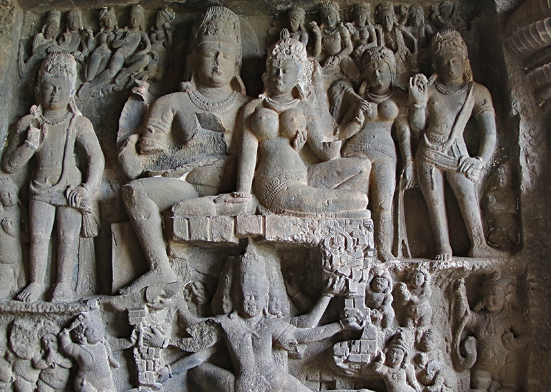
Now, the Great Flood which is mentioned in several literature sources all over the world and which potentially devastated the whole planet be the explanation for building an underground city. There are several underground cities being discovered all over the world which were inhabited in the past.
These spectacles of our glorious past are probably just a minuscule percentage of many other significant architectural wonders that dot the Indian landscape. Moreover, the ancient Bharatvarsh was spread out in parts of today's Nepal, Afghanistan and south-east India and innumerable carvings and temples have been discovered as far as Japan.
It is time we read, understood and acknowledged the wealth of information that Indian texts and monuments provide. It is time we appreciated our glorious past.
You may also like to read: kailasa temple ellora















